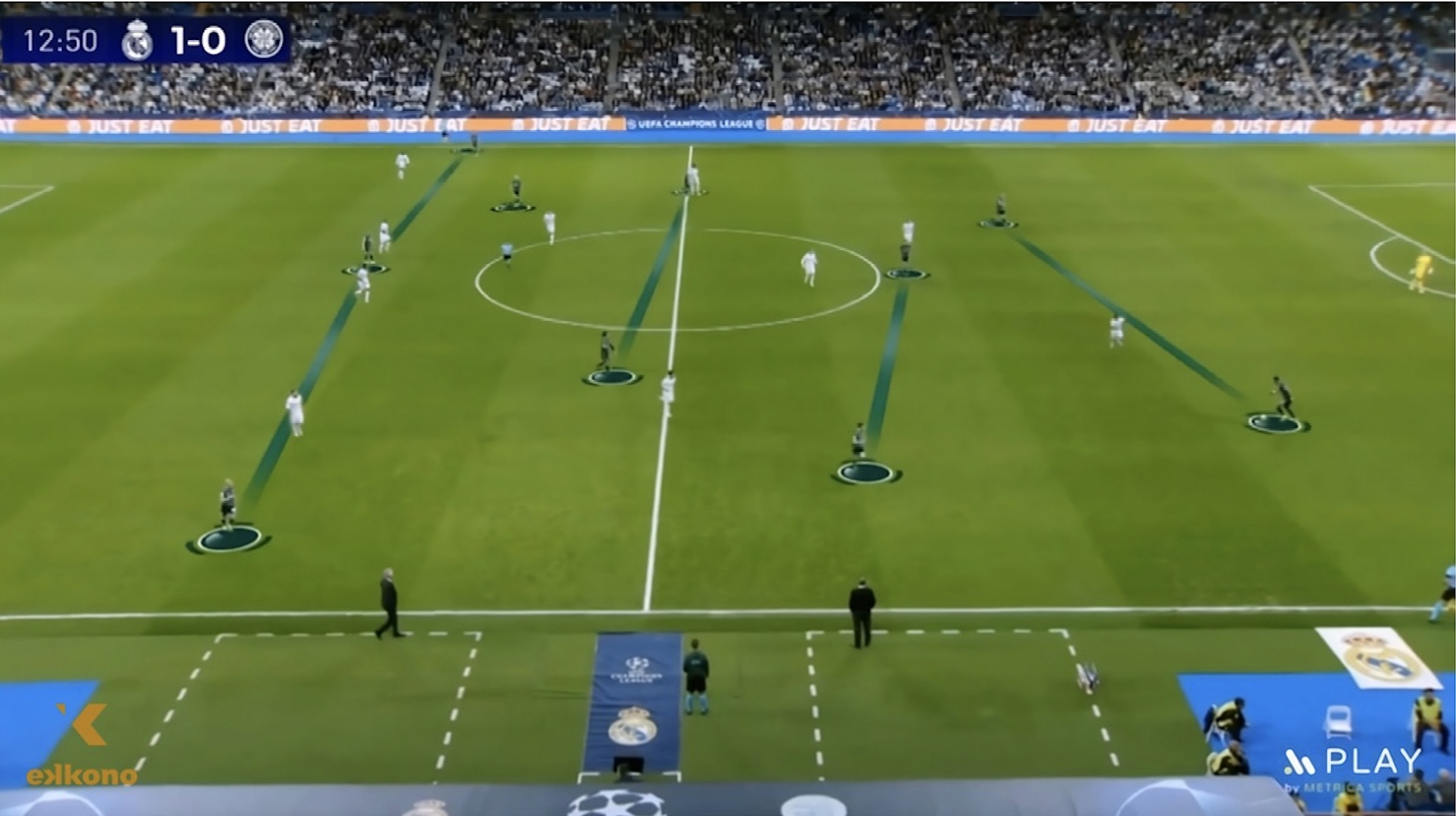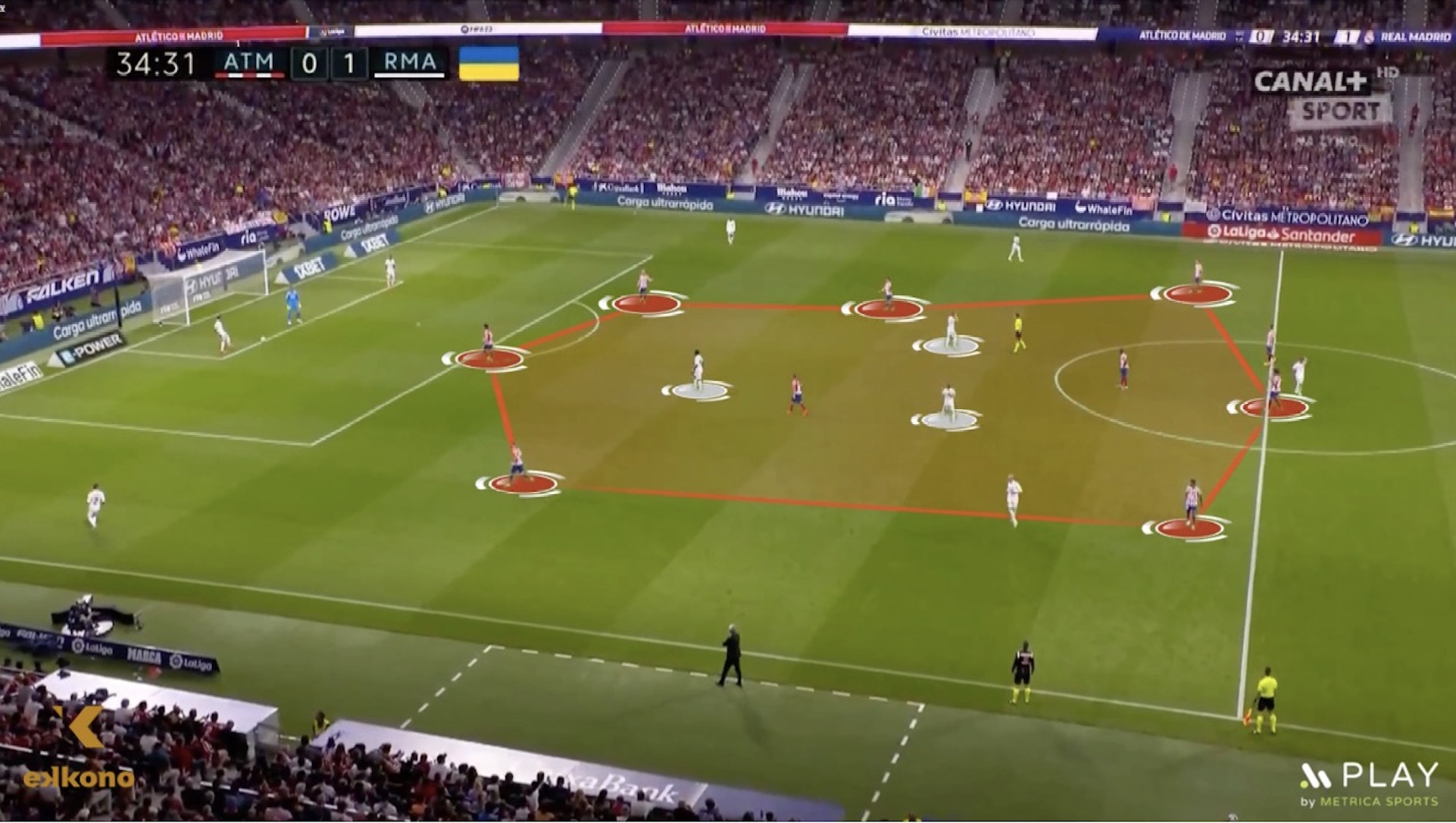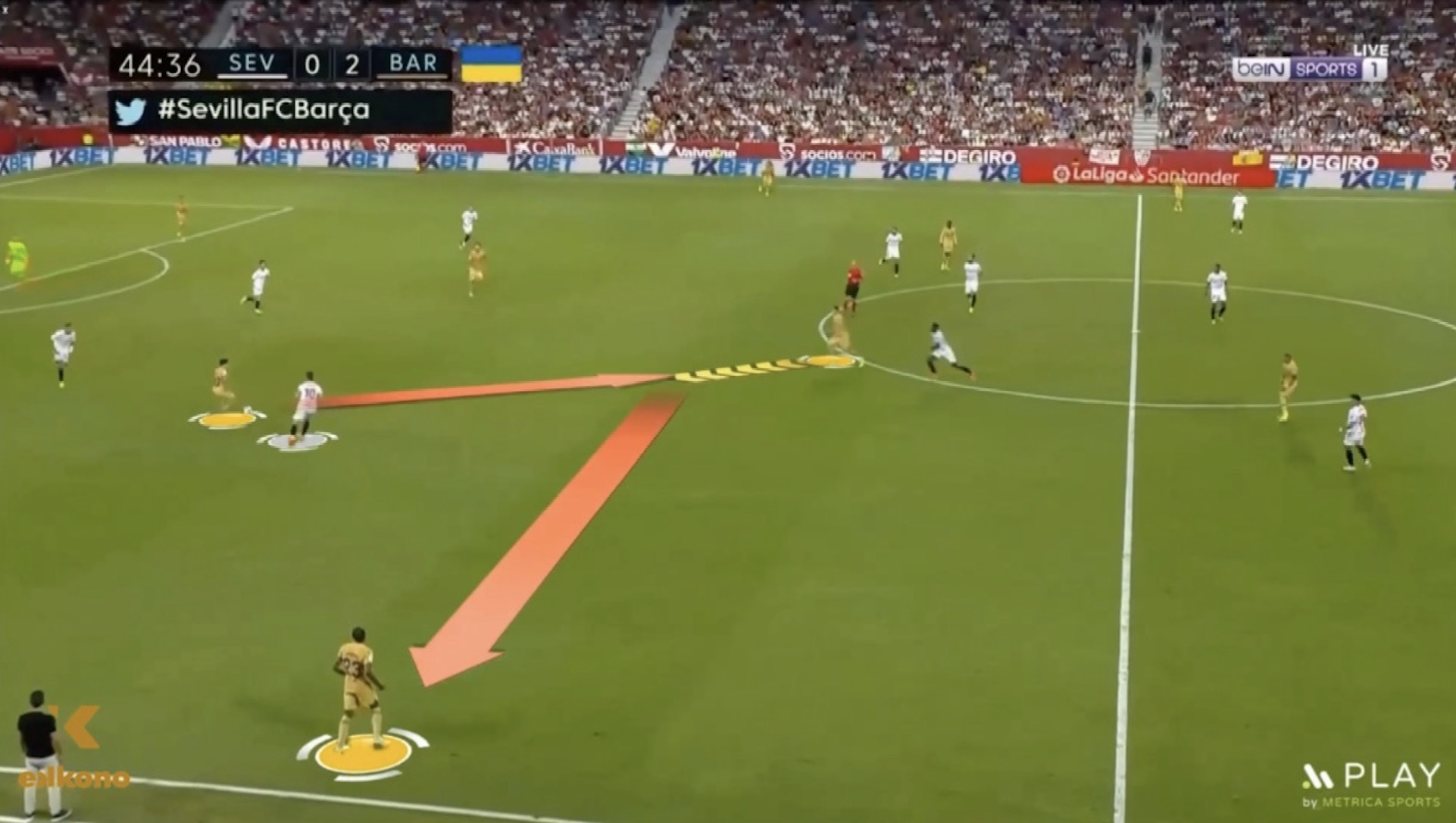
Positional attack is one of the most important game phases for those teams who want to be proactive and attack compact defensive blocks. In this article, we will review the three key elements that your team must master to excel in the positional attack: team structure, ball circulation and player movement. Each of them has its importance and must respect certain principles to help the team open up defensive blocks and attack the opposing goal in advantage. In this article, we will explain how to attack defensive blocks and which tools you can provide your players in the positional attack phase.
Team Structure
The first critical aspect of the positional attack is having a good team structure. Some of the most important principles related to this topic are depth, width, and the organization of the inner structure. It’s essential to ensure sufficient depth and width in our team structure because it helps generate various spaces. Thus, the correct level of width will provide space between the players of the opponent’s same line, while good depth will create spaces between defensive lines. Ensuring the right levels of depth and width can be achieved in different ways. For example, it can be provided positionally or through the movement of one or several players.
Once we have established the optimal level of width and depth, we need to focus on what is happening inside our block. Without proper internal structure organization, issues such as struggles within the block, structural problems, potential defensive responsibilities, or issues in ball movement may arise. To avoid this, we need to ensure the inner structure with different levels of depth (between strikers and midfielders, and between midfielders and defenders) and varying levels of width. Moreover, players should adopt an inner diagonal organization, meaning they need to position themselves diagonally relative to the line behind them and the line in front, to provide more options to the ball holder.

Team Structure
In this example, Real Madrid has a good inner diagonal organization with with different levels of depth and width in the build-up phase.
“TO ENSURE A GOOD POSITIONAL ATTACK, IT’S ESSENTIAL TO PRIORITIZE THREE CRITICAL CONCEPTS IN A SPECIFIC SEQUENCE: TEAM STRUCTURE, BALL MOVEMENT, AND PLAYER MOVEMENT. THESE ELEMENTS COLLECTIVELY FORM THE BACKBONE OF EFFECTIVE STRATEGIES AGAINST DEFENSIVE BLOCKS.”
Ball Movement
When discussing ball movement, there are two main principles to consider. The first principle is identifying the player with the advantage. This means we need strategies that not only locate a player with an advantage but also provide enough time and space for them. One method to achieve this is by employing the third player concept, which eases finding the advantaged player through strategic positioning and movement.
The second principle focuses on playing from the player with the advantage. Once we have created time and space for the player with an advantage, it’s crucial to utilize this opportunity and play aggressively to progress in the game.

Ball Movement
In this action, FC Barcelona identifies the player with the advantage and uses the third player concept to progress.
Player Movement
Even with a solid team structure and well-thought-out ball movement strategies, sometimes these elements alone may not be enough to create a significant advantage. This is where player movement becomes crucial. The movement of players can be categorized into three zones: the build-up zone, the progression zone, and the ending zone. During the build-up phase, excessive movement is not desirable as it can congest spaces, making it challenging to play out from this area. Conversely, increased player movement is essential in the progression and ending zones, particularly in the latter, for instance, when confronting a low-block defense. To learn more about how to attack a low-block defense, read our detailed article on the subject here.
Player movement serves to create advantages through:
- Numerical Advantage
- Creating and occupation spaces
- Distraction of defensive players
For example, the overlapping run of a fullback can create a numerical advantage of 2vs1 or 3vs2 in a specific area of the pitch.

Player Movement
As we can see in this example, Ángel Di María (PSG) makes a movement to receive the ball between the defensive lines.
Conclusion
To execute a proficient positional attack, it’s essential to prioritize three critical concepts in a specific sequence: team structure, ball movement, and player movement. This sequence is crucial because a solid team structure forms the fundamental basis for effective ball circulation and dynamic player movement. The team structure must possess an adequate level of depth and width, as well as organized internal structure. This organization includes varying levels of depth and width, along with diagonal coordination among players. Once the team structure is established, focus shifts to ball movement, emphasizing two main strategies: identifying the player with the advantage and capitalizing on this advantage through play. The final concept, player movement, is categorized into three zones: the build-up zone, the progression zone, and the ending zone. Player movement aims to create advantages by achieving numerical superiority, generating and occupying space, or distracting defensive players.
Watch the webinar on our virtual campus and learn more about how to use positional attacks to attack defensive blocks.
